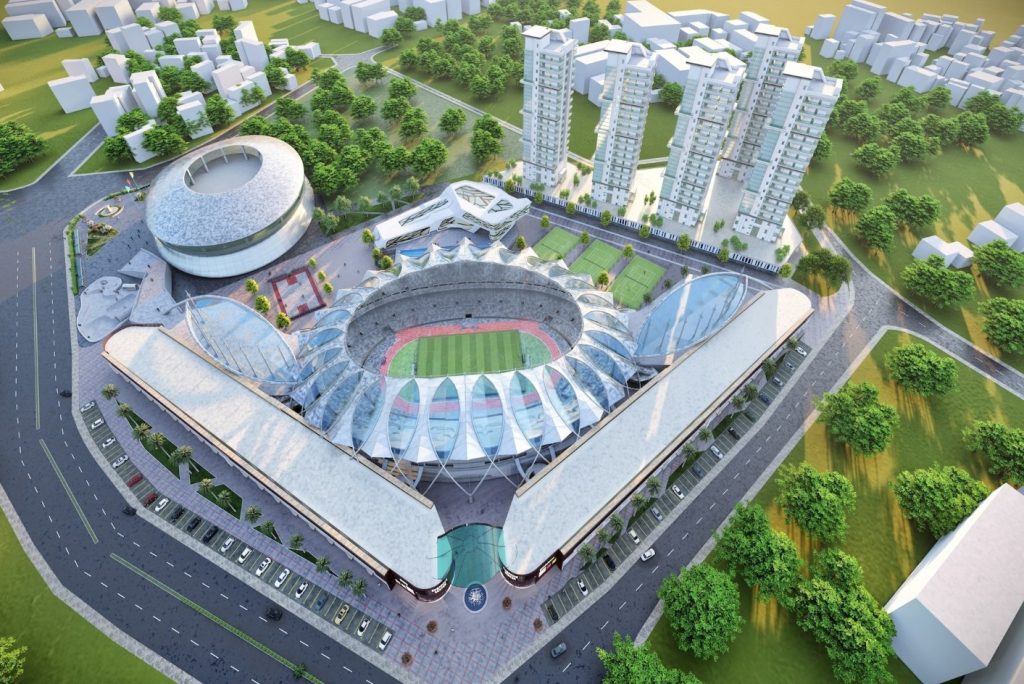Indore Stadium: Cricket is a game of precision, power, and strategic placement. One often overlooked factor that significantly impacts a match is the size and configuration of the stadium boundaries. The Holkar Cricket Stadium in Indore, Madhya Pradesh, is a prime example of how stadium design and boundary dimensions can influence the pace and outcome of a cricket match.
Table of Contents
Overview of Holkar Cricket Stadium
Indore Stadium: Holkar Stadium, named after the Holkar dynasty of the Marathas, is one of India’s most iconic yet compact international venues. Located in the heart of Indore, the stadium has hosted domestic and international matches, including Tests, ODIs, and T20s. Due to its relatively small size compared to other international grounds, it has gained a reputation as a high-scoring venue, especially in limited-overs cricket.
- Location: Indore, Madhya Pradesh
- Established: 1990s (international matches since 2006)
- Seating Capacity: Approximately 30,000
- Owner: Madhya Pradesh Cricket Association (MPCA)
Why Boundary Lengths Matter
Indore Stadium: The dimensions of a cricket ground’s boundary play a crucial role in match strategy. Smaller boundaries favor batsmen, especially in T20s and ODIs, where power-hitting is a key aspect of the game. Shorter side boundaries make it easier for batters to clear the ropes, leading to higher scores and more sixes.
Indore Stadium: On the other hand, bowlers—especially spinners and medium pacers—may find it harder to defend totals or contain runs. Captains must adapt their field placements and bowling strategies accordingly.
Holkar Stadium Boundary Dimensions
| Direction | Approximate Distance (in meters) |
|---|---|
| Straight | 70 – 75 m |
| Square boundaries | 56 – 61 m |
| Fine leg | 58 m |
| Third man | 60 m |
| Long-on/Long-off | 70 – 72 m |
| Deep extra cover | 68 m |
| Mid-wicket | 60 m |
Note: These distances can vary slightly based on pitch position on the day of the match.
Impact on Match Outcomes
Due to its short square boundaries and dry pitch conditions, Holkar Stadium has become known for its batsman-friendly conditions. The pitch generally favors stroke play, and the fast outfield further aids the scoring rate.
Case Study: High-Scoring Games
Some of the highest scores in Indian cricket have come from this venue. One of the most notable was India’s score of 418/5 against West Indies in an ODI in 2011. In T20 Internationals, teams frequently score above 200.
| Match Type | Highest Team Total | Year | Opponent |
|---|---|---|---|
| ODI | 418/5 | 2011 | West Indies |
| T20I | 260/5 | 2022 | Sri Lanka |
| Test | 557/5 declared | 2016 | New Zealand |
The high scores are a testament to the favorable batting conditions and shorter boundary sizes.
Boundary Dimensions vs. Other Indian Grounds
Here’s how Holkar Stadium compares with some other prominent Indian venues:
| Stadium | Avg. Square Boundary (m) | Avg. Straight Boundary (m) |
|---|---|---|
| Holkar, Indore | 58 – 61 m | 70 – 75 m |
| Wankhede, Mumbai | 63 – 68 m | 72 – 76 m |
| Eden Gardens, Kolkata | 66 – 69 m | 76 – 80 m |
| Narendra Modi, Ahmedabad | 68 – 72 m | 80 – 85 m |
Holkar’s square boundaries are among the shortest in India, which helps explain its reputation as a “batting paradise.”
Tactical Considerations for Teams
For Batsmen:
- Power-hitters can target square boundaries to maximize sixes.
- Wristy players benefit from the quick outfield and can place shots for boundaries with ease.
- Ideal for right-hand/left-hand batting combinations to exploit different boundary angles.
For Bowlers:
- Spinners need to vary pace and flight to avoid being predictable.
- Pace bowlers often resort to yorkers or wide deliveries to minimize hitting zones.
- Field settings are more defensive with boundary riders always in place.
Challenges for Ground Staff
Maintaining the pitch and outfield at Holkar Stadium is crucial to ensure fairness. Given the high-scoring nature of the venue, the curators try to provide a balance by preparing slightly slower tracks, especially for red-ball cricket. However, the natural dimensions of the stadium make it difficult to prevent big totals, especially in white-ball matches.
The boundary lengths at Indore’s Holkar Stadium undeniably tilt the balance in favor of the batsmen. While bowlers must toil harder and rely on accuracy and variation, fans enjoy thrilling contests with lots of boundaries and sixes. These dimensions, while small by international standards, make Holkar one of the most exciting venues for limited-overs cricket.
As cricket evolves, stadiums like Holkar serve as key reminders that the playing environment—particularly boundary lengths—continues to shape the nature of the game in profound ways.


